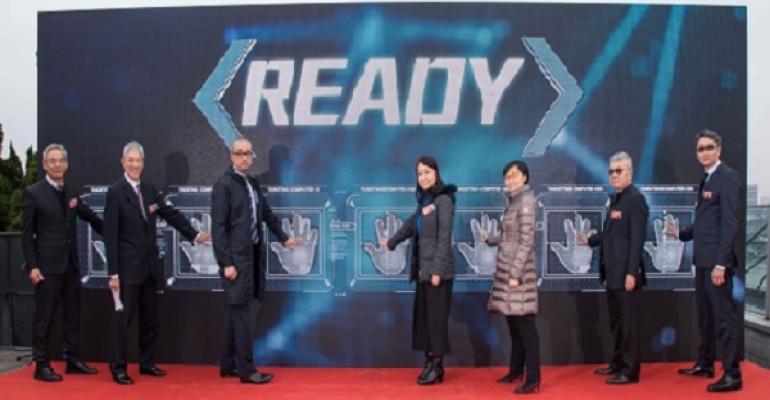The landmark project made CT9 North the city’s first container terminal where all yard cranes are operated remotely and the stacking of containers is fully automated at yard. This marks a a new chapter in the development of Hong Kong’s container terminals, as it reinforces the competitiveness of Hong Kong Port while enhancing efficiency, occupational safety and the working environment of crane operators, Hutchison Ports said.
The project also broke new ground as the world’s first simultaneous conversion of RTGCs to a remote-controlled and automated stacking system while maintaining full operations.
The process began with HIT pioneering a remote operation system for rail-mounted gantry cranes (RMGCs) at its CT9 North terminal in 2012. In late 2013, HIT started to configure 29 RTGCs, which had been manually operated by crane operators from crane cabins, into remote-controlled cranes, while simultaneously introducing an automated container stacking system. The new electrically-powered system is expected to bring efficiency gains of 20% as well as lower emissions and higher safety.
HIT md Gerry Yim, pointed out that the remote crane operations can help improve working environment for crane operators, increase industrial safety, operational efficiency and productivity as well as create a cleaner terminal environment by reducing carbon dioxide emissions by 30% compared to the previous cranes.
Yim remarked that HIT’s adoption of advanced technology has improved the working environment of crane operators. HIT will also offer training opportunities and organise promotion activities to attract new talents into the industry to ease the labour shortage, he added.
Deputy Secretary for Transport and Housing Angela Lee said that the port has long been a cornerstone of Hong Kong’s economic growth.
She noted the port’s success can be largely attributed to the efficient and professional management and services of the terminal operators, who have made continuous investments to capitalise on emerging technologies and to upgrade the port facilities.
Lee lauded HIT’s brand-new remote operation system as not only raising the terminal’s operational efficiency, but also strengthening the competitiveness of Hong Kong Port.
Copyright © 2024. All rights reserved. Seatrade, a trading name of Informa Markets (UK) Limited. Add Seatrade Maritime News to your Google News feed.


